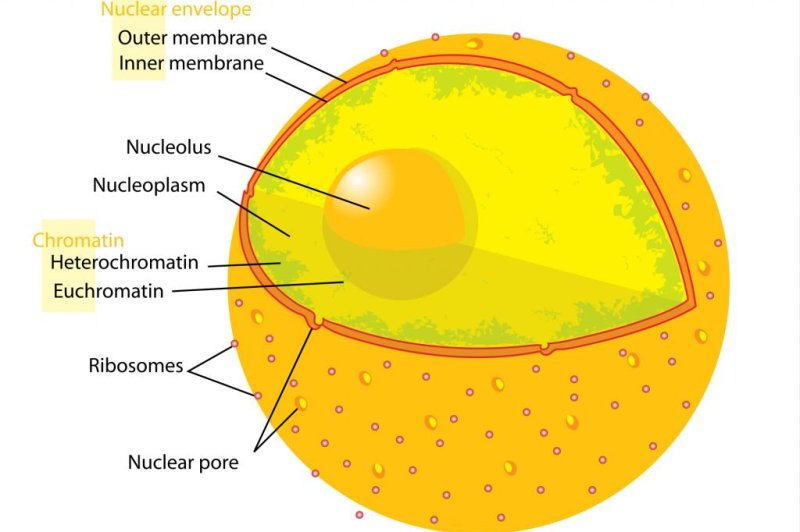The liquid drop-like nucleolus inside a cell's nucleus produces ribosomes, which facilitate a cell's protein synthesis. Photo by Mariana Ruiz/LadyofHats/
Wikimedia Commons
Nov. 26 (UPI) -- To keep their shape, cells rely on two different types of motion, according to a new study. The discovery -- detailed this week in the journal eLife -- promises new insights into the biomechanics of cellular health, insights that could reveal the origins of disease.
"Nucleolar malfunction can lead to disease, including cancer," senior study author Alexandra Zidovska, an assistant professor of physics at New York University, said in a news release. "Thus, understanding the processes responsible for the maintenance of nucleolar shape and motion might help in the creation of new diagnostics and therapies for certain human afflictions."
Until now, scientists weren't sure how cellular components without membranes keep their shape. The latest research revealed a unique dual motion prevents the liquid drop-like cellular components from mixing with the surrounding fluid -- a phenomenon known as liquid-liquid phase separation.
The nucleolus, the largest structure in the nucleus, facilitates a cell's protein synthesis. It is the most well known cellular component without a membrane.
"While the liquid-like nature of the nucleolus has been studied before, its relationship with the surrounding liquid is not known," said Zidovska. "This relationship is particularly intriguing considering the surrounding liquid -- the nucleoplasm -- contains the entire human genome."
When scientists measured the movement of nucleoli in live human cells, they found the liquid drops perform a correlated motion before two of them fuse to form one large nucleoli. The nucleoli also perform independent motions that stabilize their shape.
The new analysis also showed the smoothness of the nucleolar interface ensures the nucleoli remains sensitive to genetic changes in the surrounding liquid.
"Nucleolus, the biggest droplet found inside the cell nucleus, serves a very important role in human aging, stress response, and general protein synthesis while existing in this special state," said Zidovska. "Because nucleoli are surrounded by fluid that contains our genome, their movement stirs genes around them. Consequently, because the genome in the surrounding fluid and nucleoli exist in a sensitive balance, a change in one can influence the other. Disrupting this state can potentially lead to disease."















